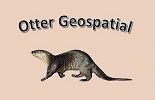Imagery acquired on a particular satellite overflight at a particular place on earth is bundled into a data package called a “scene”. The areal extent of a LANDSAT scene is about 200 km square and aligned with the orbital path of the satellite. The location of the scene on the earth’s surface is defined by a pair of numbers. The path number indicates which of several hundred north to south tracks the satellite was on when the scene was acquired. The row number indicates how far south the satellite was when the scene was acquired.
LANDSAT 1 thru LANDSAT 3 Imagery
Scenes from these early LANDSAT programs are identified by their Worldwide Reference System 1 (WRS-1) path and row numbers. Start the USGS Global Visualization Viewer (GLOVIS). From the dropdown menus select Dataset then Landsat Archive then Landsat 1-3 MSS. Find the desired location on the WRS-1 web map. Contents of the image archive associated with the selected path and row are displayed for viewing and/or download.
LANDSAT 4 and Later Imagery
Scenes from these more contemporary LANDSAT programs are identified by Worldwide Reference System 2 (WRS-2) path and row numbers. Start the USGS Global Visualization Viewer (GLOVIS). From the dropdown menus select Dataset then Landsat Archive then Landsat 4 – Present. Find the desired location on the WRS-2 web map. Contents of the image archive associated with the selected path and row are displayed for viewing and/or download.

Comments are closed.